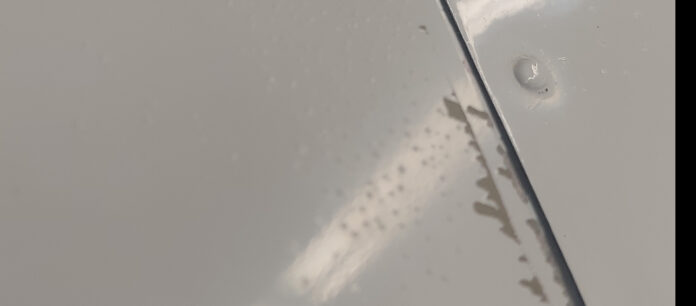Aircraft corrosion poses a significant challenge for all aviation industries. This article will dive into the causes, types, and prevention measures.
Understanding Aircraft Corrosion:
Corrosion occurs when metal reacts with its surrounding environment, resulting in the deterioration of its properties. The presence of moisture, oxygen, contaminants such as salt, iron, pollutants, and industrial chemicals accelerates corrosion. Aircraft corrosion is primarily attributed to atmospheric conditions, exposure to chemicals and the proximity to saltwater environments. Here are just a few examples.
Types of Aircraft Corrosion:
1. Atmospheric Corrosion:
Atmospheric corrosion arises from exposure to oxygen and moisture in the air. When aircraft are parked or stored outdoors, their surfaces are susceptible. The formation of rust on exposed metals is a common manifestation of atmospheric corrosion.
2. Galvanic Corrosion:
Galvanic corrosion occurs when two dissimilar metals encounter an electrolyte, such as moisture or salt water. Due to the difference in their electrochemical potentials, one metal becomes anodic (Positive charge) and corrodes faster, while the other remains cathodic (Negative charge) and is comparatively protected. An example is exposed aircraft skin, where the surface protection has been depleted and comes into contact with dissimilar metals. Some products within the industry contain iron, and without a process to remove contamination when these dissimilar metals meet, depending on the length of time in contact, galvanic corrosion will occur.
Stress Corrosion Cracking (SCC):
Stress corrosion cracking is a factor that results from the combined action of tensile strength under pressure molecular separation and a corrosive environment.
Preventive Measures:
Surface Protection:
To safeguard aircraft from corrosion and separation, technologies like ceramic coating/ sealants/waxes provide a sacrificial layer over the paint layer, providing a more durable, smooth surface that, in some cases, bonds on a molecular level with the paint substrate. These protective coatings can vary in durability and longevity according to the environment, used cleaning products, and care exercised during repair work. Environmental and chemical protection programs should be assessed yearly, and different regions of the United States should have varying programs based on these environmental and chemical needs. Washing can provide significant benefits to longevity against corrosion.
Regular Inspections:
Frequent inspections are crucial to detect early signs of corrosion. Visual inspections, non-destructive testing, and specialized equipment can help identify corrosion-prone areas, enabling timely intervention and maintenance.
Corrosion Inhibitors:
Corrosion inhibitors like zinc chromate primer have been implemented to provide protection. You will often notice this process by a green color below the paint surface. Factories like Thrush Aircraft have made this standardized process. Air Tractor has chosen electromagnetic protection using the cathode/anode approach. Both systems have advantages and disadvantages.
4. Proper Maintenance:
Comprehensive inspection maintenance practices, regular cleaning, and sacrificial paint protection are essential to combat corrosion. Proper storage and hangar facilities can also minimize exposure to harsh environmental conditions.
5. Material Selection:
Choosing corrosion-resistant materials during aircraft design and manufacturing plays a vital role in preventing corrosion. The selection of alloys, coatings, and composite materials can significantly extend the lifespan of an aircraft.
Conclusion:
Aircraft corrosion is an ongoing battle that requires continuous effort and innovation to ensure aviation systems’ safety, reliability, and longevity. By understanding the causes and types of corrosion, implementing preventive measures, and employing advanced materials and technologies, the aviation industry can minimize the impact of corrosion on aircraft. Through these combined efforts, we can preserve the skies and continue to soar toward a safer and more efficient future in aviation.
Byron Yoder owns Frontline Detail, a veteran-owned aviation detailing, ceramic coating and industrial corrosion protection company. Byron’s experience is 15 years of detailing with certifications in aircraft detailing, ceramic coating and corrosion protection. Frontline Detail is based out of North Dakota. Please get in touch with Frontline Detail at 701-739-6550 or email frontlinedetailnd@hotmail.com with any questions about your aircraft detailing needs.





